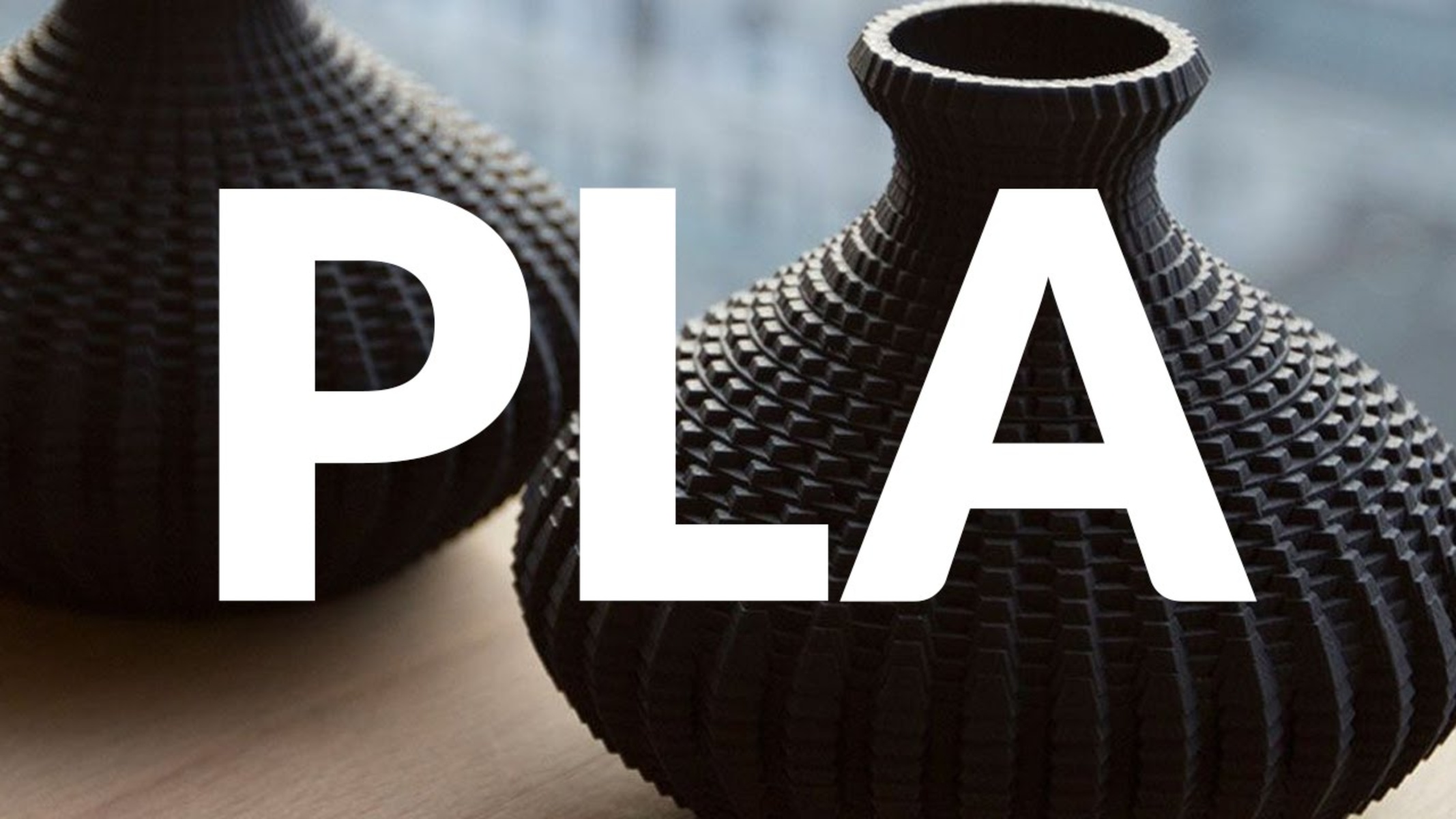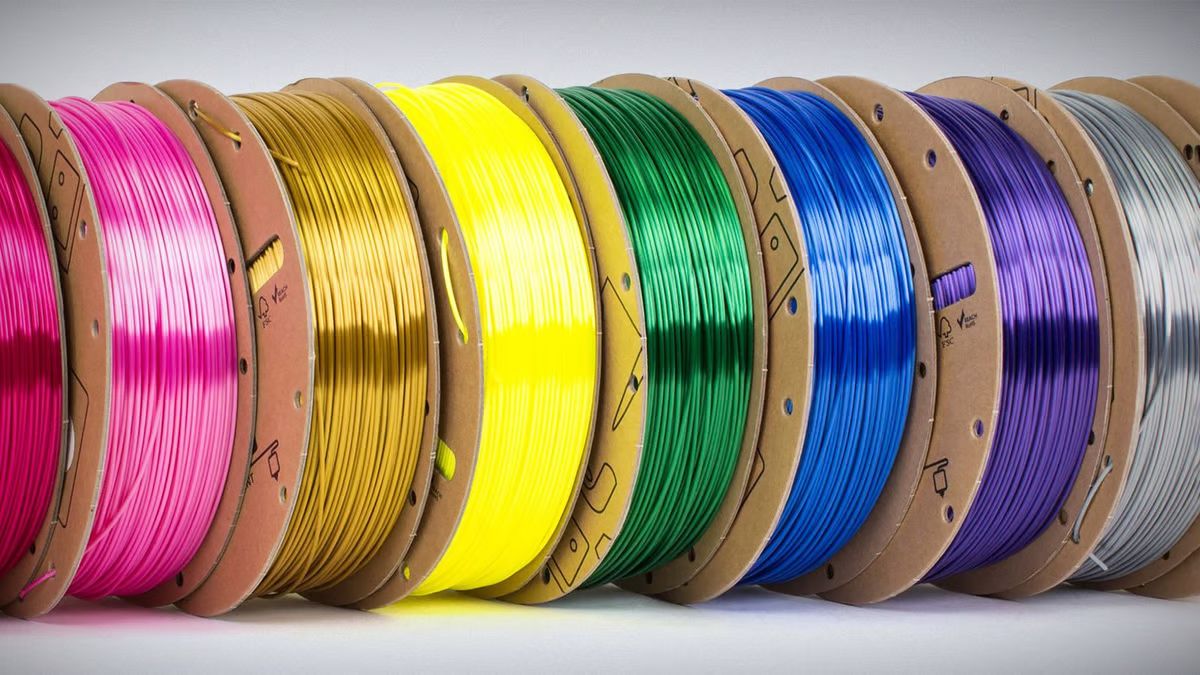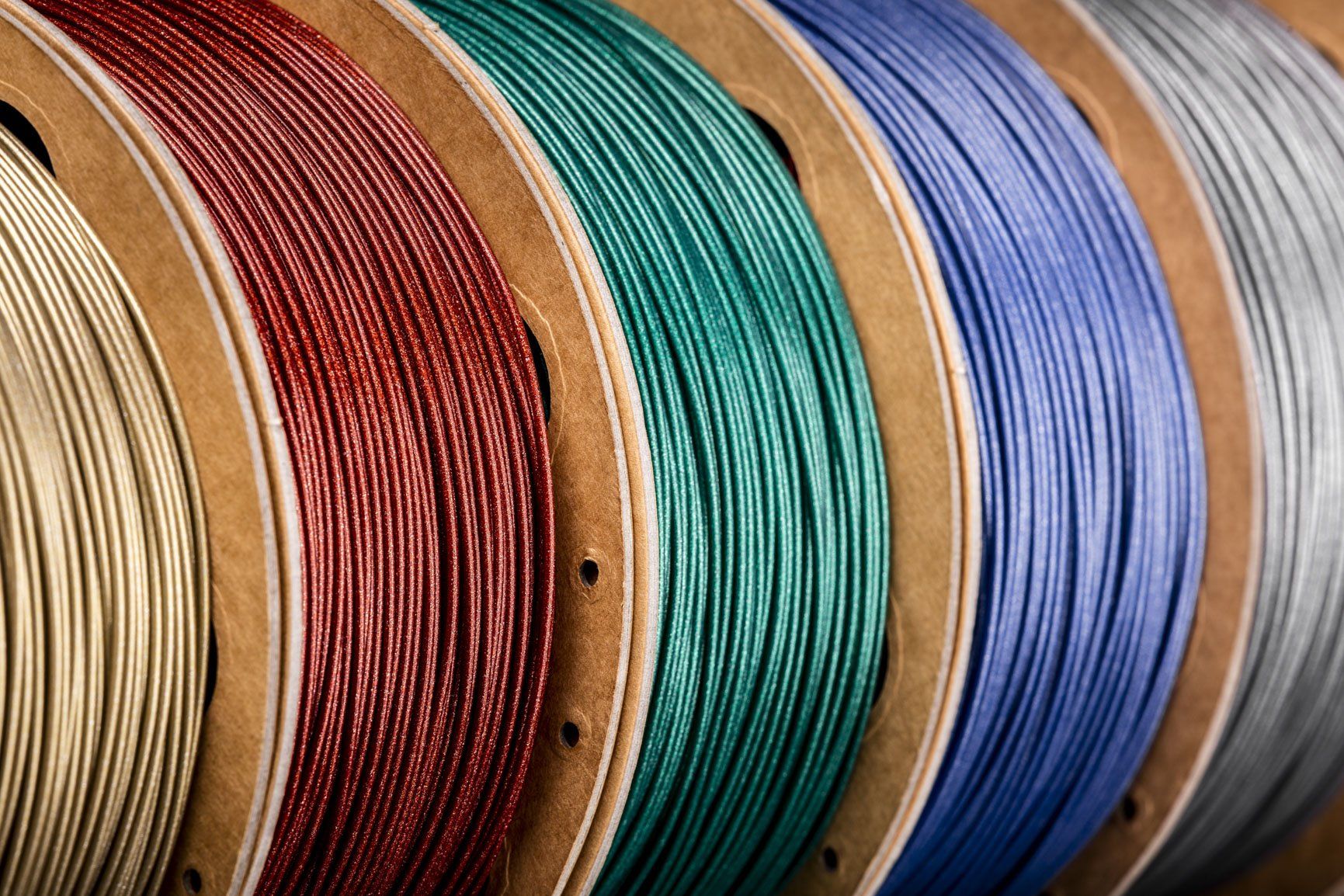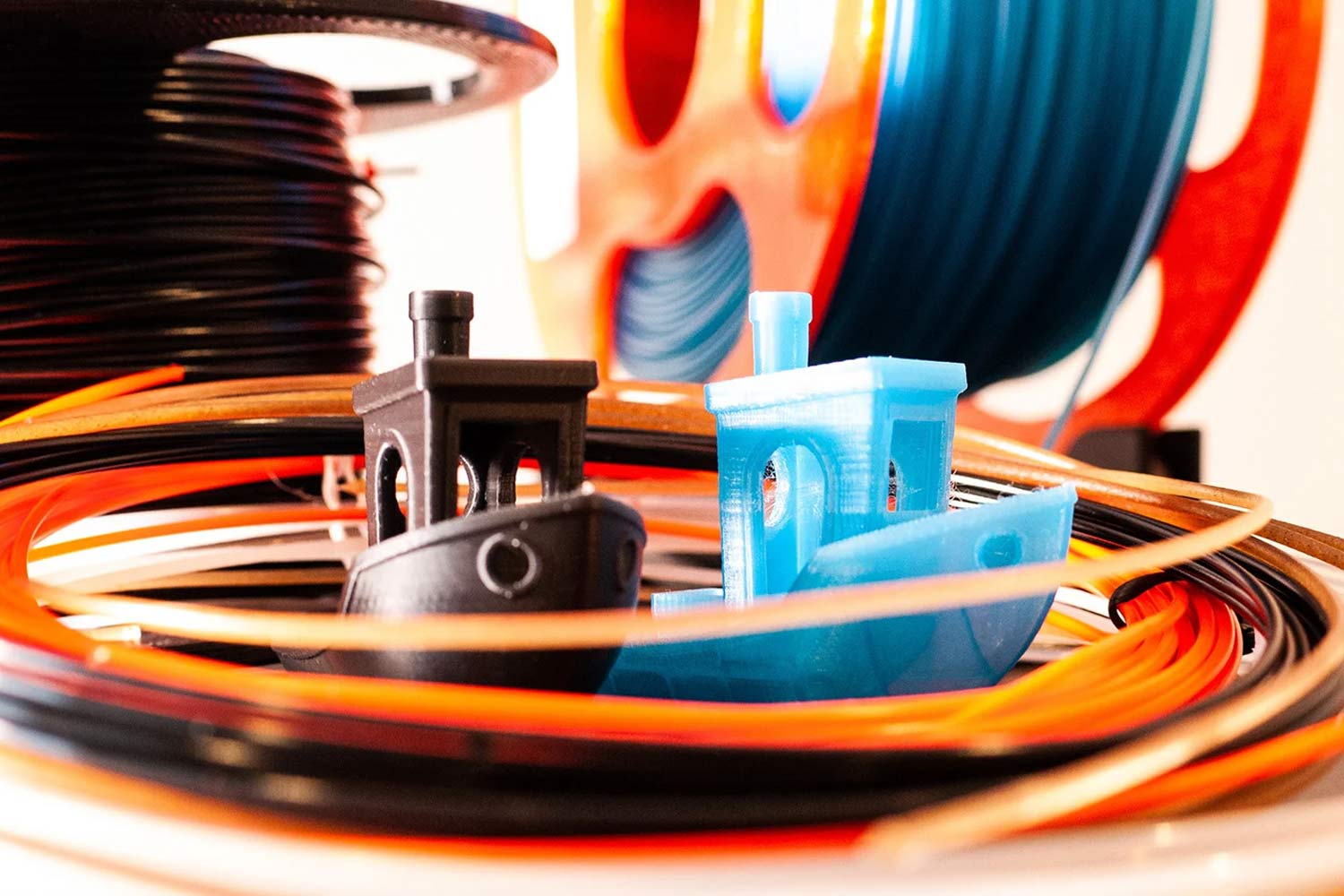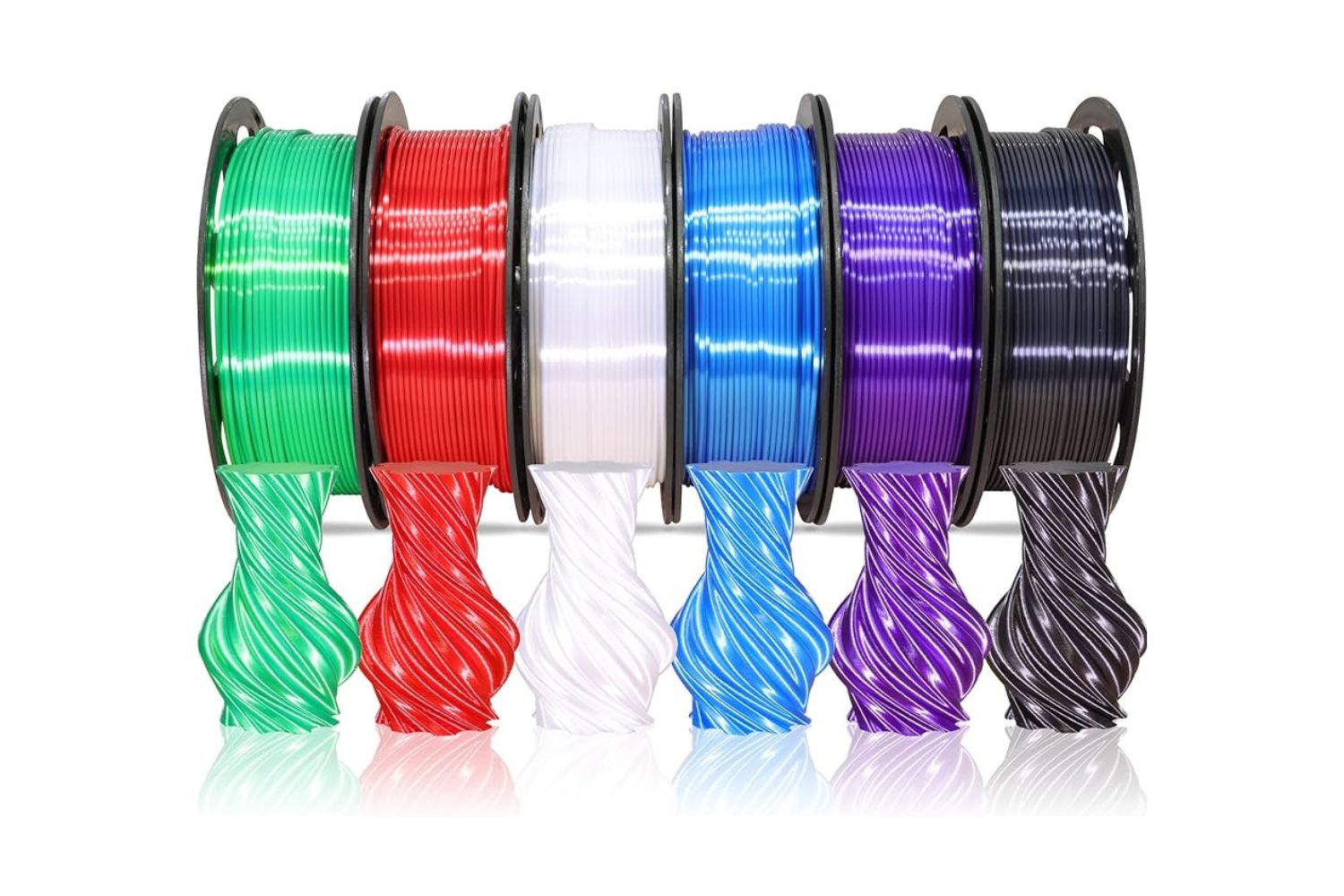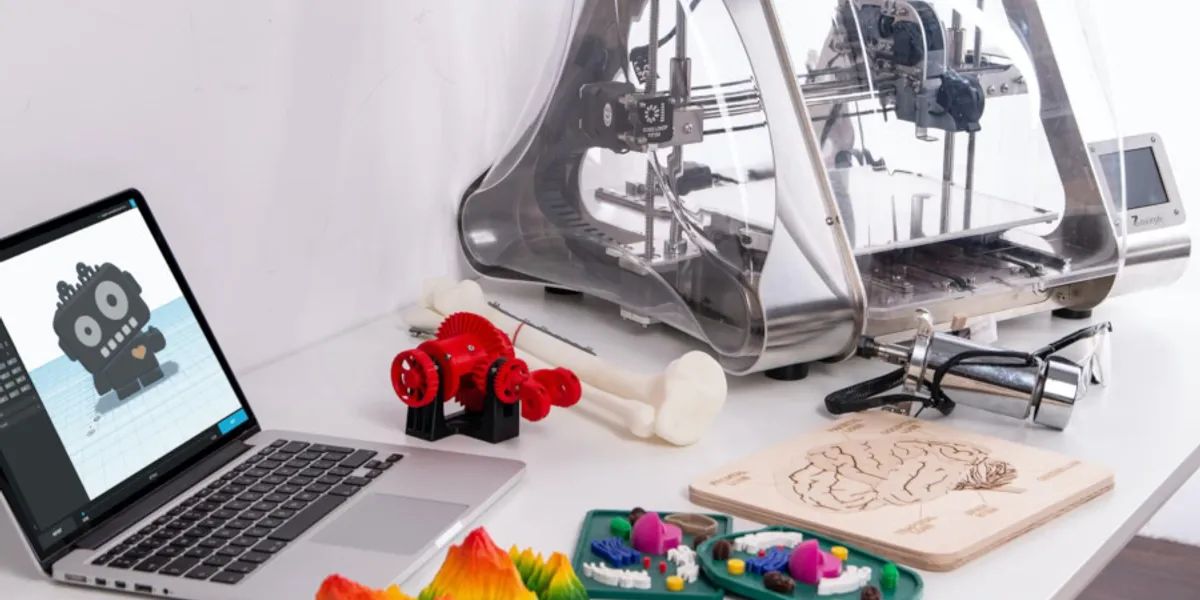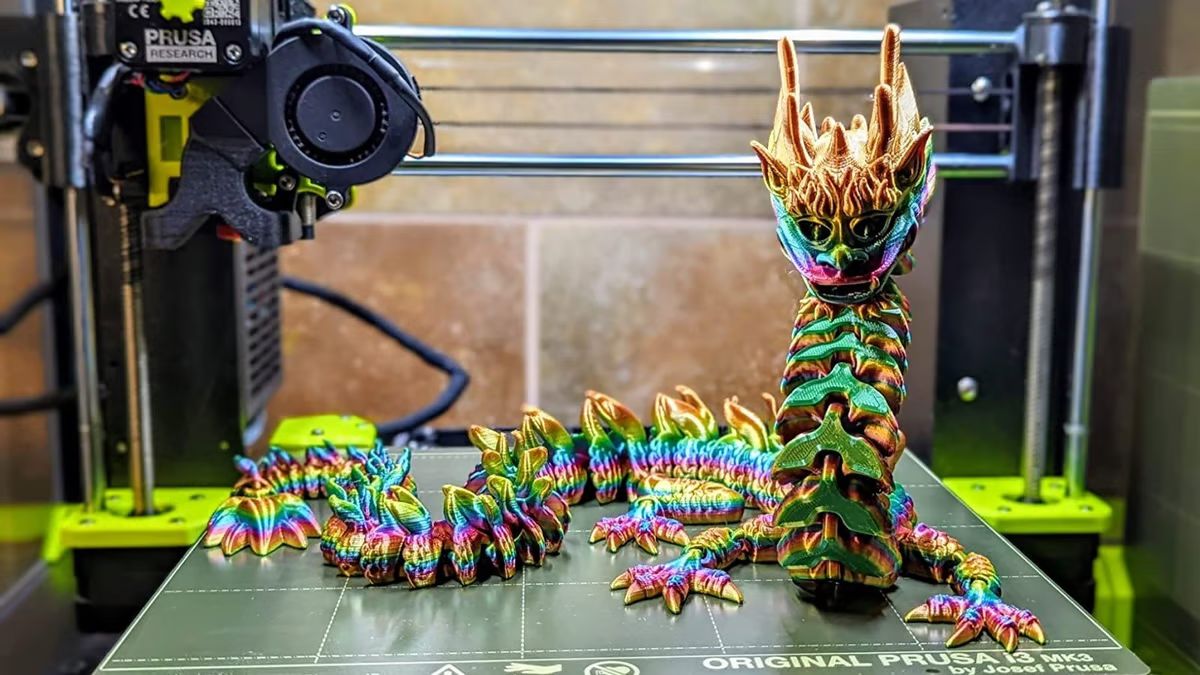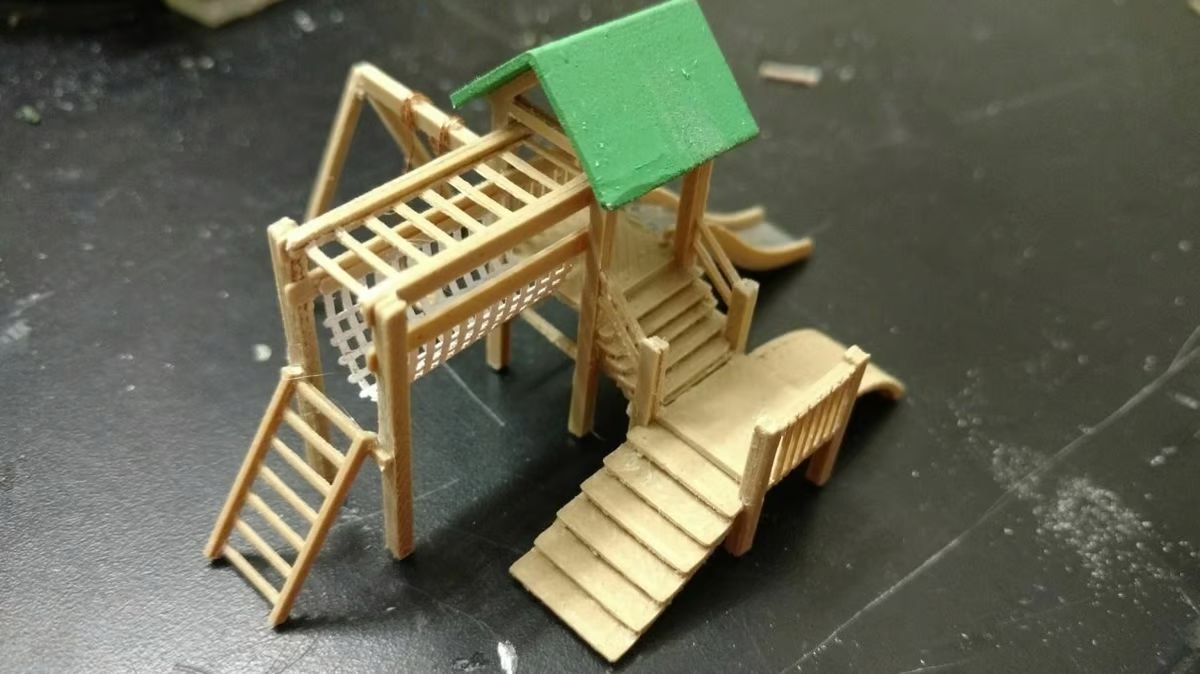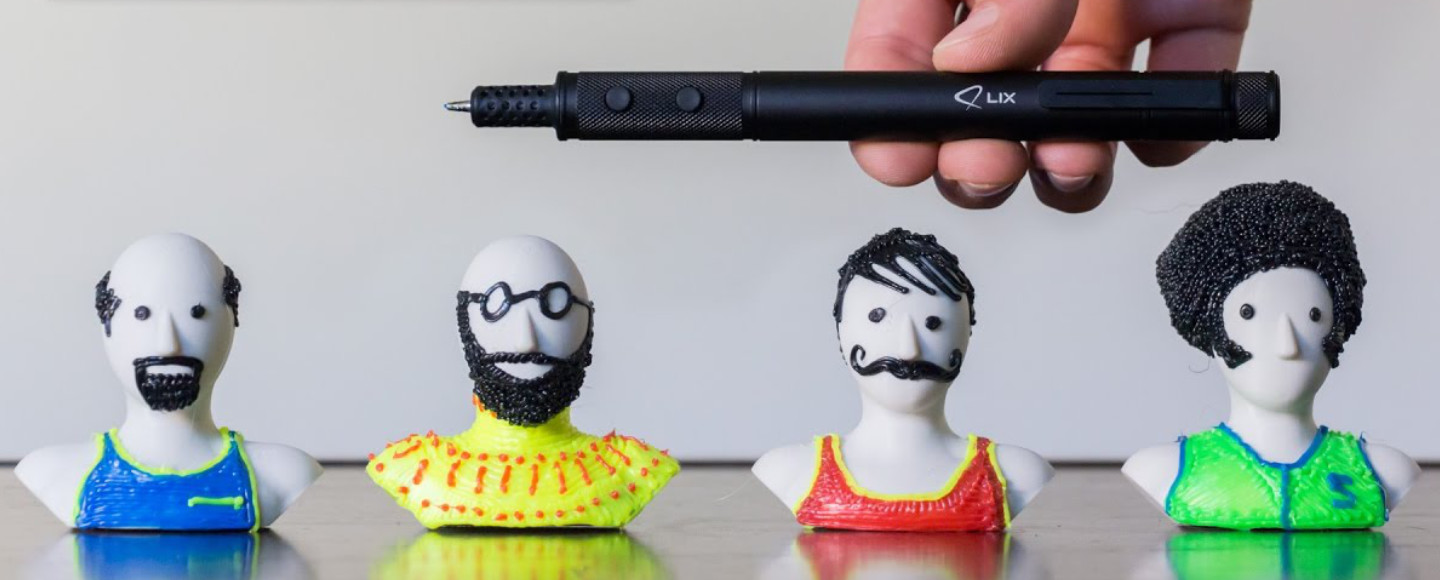Introduction
Welcome to the exciting world of PLA 3D printing! 3D printing has revolutionized the manufacturing industry, allowing users to create physical objects from digital designs. PLA, or Polylactic Acid, is one of the most popular materials used in 3D printing due to its versatility, ease of use, and eco-friendly properties.
So, what exactly is PLA? PLA is a biodegradable polymer derived from renewable resources such as cornstarch or sugarcane. It has gained popularity in recent years due to its low environmental impact and compatibility with various 3D printers. PLA filaments come in a wide range of vibrant colors and have a smooth, matte finish, making them an excellent choice for both functional and artistic prints.
Now, you may be wondering, what sets PLA 3D printing apart from other methods of 3D printing? The primary difference lies in the material used. PLA, being a thermoplastic, can be heated and melted to create layers, which eventually solidify to form the desired object. This process, known as Fused Deposition Modeling (FDM), is the most common technique used in consumer-grade 3D printers.
One of the key advantages of PLA 3D printing is its ease of use. PLA has a relatively low melting point compared to other materials like ABS, making it easier to handle and less prone to warping during the printing process. Additionally, PLA does not require a heated bed for adhesion, reducing the complexity of setup for users.
Another major advantage of PLA is its environmental friendliness. As mentioned earlier, PLA is derived from renewable resources and is biodegradable, making it a more sustainable choice compared to petroleum-based plastics. PLA prints can be composted or recycled, further minimizing their impact on the environment.
However, like any other 3D printing material, PLA has its downsides. It is not as strong or heat-resistant as certain alternatives like ABS or Nylon, limiting its applications in certain industries. PLA is also susceptible to degradation under prolonged exposure to moisture, which can affect the durability of printed objects.
Despite these limitations, PLA 3D printing finds applications in various fields. From prototyping and product design to educational purposes and artistic creations, the versatility of PLA makes it an ideal choice for both beginners and experienced 3D printing enthusiasts.
In the next section, we will delve into the advantages and disadvantages of PLA 3D printing, exploring its potential as a valuable tool for bringing ideas to life.
What is PLA?
PLA, short for Polylactic Acid, is a bio-based thermoplastic polymer that has gained significant popularity in the field of 3D printing. It is derived from natural resources such as cornstarch or sugarcane, making it a more sustainable alternative to traditional petroleum-based plastics.
PLA is characterized by its biodegradability, low environmental impact, and ease of use. It has become a preferred material for both professional and hobbyist 3D printers due to its versatile properties and wide availability in the market.
One of the key benefits of PLA is its ease of printing. It has a relatively low melting point, making it compatible with a wide range of 3D printers, including those designed for consumer use. PLA filament can be extruded at lower temperatures compared to other materials, reducing the risk of nozzle clogging and ensuring smoother printing process.
PLA filament also has excellent adhesion properties, which means it sticks well to the print bed. This eliminates the need for a heated bed, making PLA printing even more accessible to beginners. Additionally, PLA is less susceptible to warping and shrinking during the printing process, resulting in more successful and accurate prints.
Another advantage of PLA is its aesthetic appeal. PLA prints have a smooth and glossy surface finish, lending a professional look to the final product. PLA filaments are available in a wide range of colors, allowing users to create vibrant and visually appealing prints.
Moreover, PLA is a safe material to handle. It does not emit harmful fumes or odors during the printing process, making it suitable for indoor use. This makes PLA a popular choice for educational institutions, where safety is a top priority.
However, it’s important to be aware of the limitations of PLA. While PLA is relatively strong, it is not as durable as some other materials such as ABS or Nylon. PLA objects may be prone to breaking under stress or high impact.
In addition, PLA has a relatively low heat resistance compared to other plastics. This makes it unsuitable for applications that involve high-temperature environments, such as automotive or industrial components.
Despite these limitations, PLA is widely used in a variety of applications. From 3D printing prototypes and functional parts to creating decorative objects and artistic designs, PLA offers a cost-effective and environmentally friendly solution.
In the next section, we will discuss how PLA 3D printing differs from other 3D printing methods and the specific advantages it offers.
How is PLA 3D printing different?
PLA 3D printing stands out from other methods of 3D printing due to its use of Polylactic Acid as the printing material. This sets it apart in terms of ease of use, environmental impact, and versatility.
One of the key differences is the printing process itself. PLA is typically used in Fused Deposition Modeling (FDM) printers, where the filament is melted and extruded through a nozzle to create successive layers that build up the object. FDM is the most common and accessible 3D printing method, making PLA 3D printing a popular choice for both professionals and hobbyists.
Compared to other materials used in 3D printing, PLA has a lower melting point. This makes it easier to work with, as it requires lower temperatures for extrusion. The lower temperature requirements also mean that PLA printing does not require a heated bed for adhesion, simplifying the setup process for users.
In terms of environmental impact, PLA is considered a more eco-friendly option. PLA is derived from renewable resources and is biodegradable, making it a greener alternative to petroleum-based plastics. PLA prints can be composted or recycled, reducing waste and minimizing the environmental footprint associated with 3D printing.
Furthermore, PLA offers a wide range of aesthetic possibilities. PLA filaments are available in various colors, allowing users to create visually appealing prints. The resulting objects have a smooth and matte finish, adding to their overall attractiveness.
However, it is important to note that PLA does have its limitations in terms of strength and heat resistance. While it is suitable for many applications, such as prototyping, artistic projects, and educational purposes, it may not be the best choice for high-stress or high-temperature environments.
Overall, PLA 3D printing is distinguished by its ease of use, environmental friendliness, and versatility. Its accessibility and compatibility with FDM printers make it a popular choice for beginners and advanced users alike. By utilizing PLA as the printing material, users can create high-quality, visually appealing objects while minimizing the environmental impact of their 3D printing endeavors.
Next, we will explore the advantages and disadvantages of PLA 3D printing in more detail, providing you with a comprehensive understanding of its strengths and shortcomings.
Advantages of PLA 3D Printing
PLA 3D printing offers a multitude of advantages that make it an attractive choice for both professionals and hobbyists alike. From its ease of use to its eco-friendly nature, here are some key advantages of PLA 3D printing:
1. Easy to Use: PLA has a relatively low melting point, making it easy to work with, especially for beginners. It requires lower extrusion temperatures, reducing the risk of nozzle clogging and making it compatible with a wide range of 3D printers.
2. No Heated Bed Required: Unlike some other materials used in 3D printing, PLA does not require a heated bed for adhesion. This eliminates the need for additional equipment and simplifies the setup process, making it more accessible for users.
3. Wide Color Selection: PLA filaments are available in a wide range of vibrant colors. This allows users to create visually appealing prints with a variety of hues, making it ideal for artistic projects, educational models, and decorative objects.
4. Excellent Aesthetic Quality: PLA prints have a smooth and matte finish, which adds to their aesthetic appeal. The surface quality is generally clean and flawless, making PLA a great choice for objects that require a professional-looking finish.
5. Low Environmental Impact: PLA is derived from renewable resources such as cornstarch or sugarcane, making it a more environmentally friendly alternative to petroleum-based plastics. PLA is also biodegradable, meaning it can break down naturally over time, reducing its impact on the environment.
6. Safer to Handle: PLA does not emit harmful fumes or odors during the printing process. This makes it a safer option, especially for indoor use and educational settings where user safety is a priority.
7. Cost-effective: PLA filaments are generally more affordable compared to some other 3D printing materials. Its cost-effectiveness makes PLA a popular choice for users looking to experiment, prototype, or produce objects on a budget.
8. Compatible with Many Applications: PLA is suitable for a wide range of applications, including prototyping, product design, educational models, and artistic creations. It is ideal for objects that don’t require high-strength or high-temperature resistance.
9. Reduced Warping and Shrinkage: PLA has less tendency to warp or shrink during the printing process compared to materials like ABS. This increases the likelihood of successful prints and reduces the need for additional supports or adhesion aids.
10. Recyclable and Compostable: PLA prints can be composted or recycled, further reducing waste and environmental impact. This makes PLA a more sustainable choice compared to materials that are not easily biodegradable.
These advantages make PLA 3D printing a versatile and user-friendly option, allowing creators to bring their ideas to life with ease. However, it’s important to consider the limitations of PLA as well, which we will explore in the following section.
Disadvantages of PLA 3D Printing
While PLA 3D printing offers numerous advantages, it is important to be aware of its limitations and disadvantages. Here are some of the key drawbacks of PLA 3D printing:
1. Limited Strength: PLA is not as strong as certain other materials like ABS or Nylon. It is prone to breaking or cracking under high stress or impact. This makes it less suitable for applications that require high durability or mechanical strength.
2. Low Heat Resistance: PLA has a relatively low heat resistance compared to materials like ABS or PETG. It softens and deforms at lower temperatures, limiting its use in applications that involve exposure to high temperatures or need to withstand heat.
3. Moisture Sensitivity: PLA is susceptible to moisture absorption, which can affect the quality and durability of printed objects. Exposure to moisture can lead to increased brittleness or even deformations in PLA prints, making proper storage and handling important.
4. Reduced Chemical Resistance: PLA may be less resistant to certain chemicals compared to other materials. It is not recommended for applications where the printed object will come into contact with corrosive substances or strong solvents.
5. Limited Filament Compatibility: PLA 3D printing requires a PLA-compatible filament, limiting the choice of materials compared to printers that support a wider range of filaments. This can be a disadvantage if specific material properties are required for a particular application.
6. Less Durable Outdoor: PLA prints may experience reduced durability when exposed to prolonged sunlight or outdoor conditions. UV radiation can cause degradation and discoloration of the prints over time, limiting their lifespan in outdoor applications.
7. Printer Cooling Requirements: While PLA requires lower extrusion temperatures, proper cooling is crucial to achieve optimal print quality. Inadequate cooling can result in issues like stringing or poor layer adhesion.
8. Storage Challenges: PLA filaments are susceptible to moisture absorption, so proper storage is important to maintain their quality. They should be kept in airtight containers or resealable bags with desiccants to prevent moisture-related issues.
9. Smaller Temperature Window: PLA requires more precise temperature control during the printing process compared to some other materials. A narrower temperature window means that users need to fine-tune their printer settings for successful prints.
10. Not Suitable for Food Contact: While PLA is biodegradable and derived from natural resources, it is not recommended for direct food contact. This is due to the potential for bacteria growth and the limitations in terms of chemical resistance.
It is important to consider these disadvantages when deciding whether PLA 3D printing is suitable for a particular project or application. While PLA has its limitations, it remains a popular choice for a wide range of uses due to its accessibility, eco-friendliness, and aesthetic qualities.
PLA 3D Printing Applications
PLA 3D printing finds applications in various fields, thanks to its versatility, ease of use, and eco-friendly properties. Here are some common applications where PLA 3D printing excels:
1. Prototyping: PLA is widely used for rapid prototyping due to its accessibility and cost-effectiveness. It allows designers and engineers to quickly create physical models to test and refine their designs before moving to production.
2. Product Design: PLA is often used in product design to create functional prototypes or conceptual models. Its aesthetic appeal and smooth finish make it suitable for showcasing designs to clients or stakeholders.
3. Educational Models: PLA is a popular choice in educational settings, such as schools and universities, for creating educational models, visual aids, and scientific equipment. It allows students to have a hands-on experience and enhances learning in various subjects.
4. Artistic Creations: PLA’s wide range of vibrant colors and its smooth finish make it an ideal material for artistic creations, sculptures, and decorative objects. Artists and makers can unleash their creativity and bring their imaginative ideas to life.
5. Jewelry and Accessories: PLA can be used to create intricate designs and delicate pieces of jewelry, such as earrings, pendants, or custom-designed accessories. Its lightweight nature and ability to hold fine details make it suitable for such applications.
6. Customization and Personalization: PLA allows for easy customization and personalization, making it a popular choice for creating unique and personalized items like phone cases, keychains, or personalized gifts for special occasions.
7. Architectural Models: PLA 3D printing is widely used in architectural firms to create detailed and accurate scale models of buildings and landscapes. Its ability to replicate intricate details and the flexibility to modify designs quickly make it a valuable tool for architects.
8. Medical and Dental Applications: PLA can be used to create anatomical models for medical education and surgical planning. It is also utilized in dental applications, such as creating custom orthodontic models or aligners.
9. Functional Parts and Tools: While PLA may not have the same mechanical strength as some other materials, it can still be used to create functional parts and tools for light-duty applications. Examples include custom brackets, holders, or fixtures.
10. Environmental Initiatives: PLA’s biodegradable and eco-friendly nature make it suitable for environmentally conscious initiatives. It can be used to create sustainable packaging, biodegradable disposable products, or even compostable planters.
These are just a few examples of the wide range of applications for PLA 3D printing. Its versatility, accessibility, and environmentally friendly characteristics make PLA a valuable tool for bringing ideas to life and driving innovation across various industries.
Best Practices for PLA 3D Printing
To achieve optimal results with PLA 3D printing, there are several best practices to keep in mind. These practices can help ensure successful prints, minimize potential issues, and enhance the overall printing experience. Here are some key best practices for PLA 3D printing:
1. Provide Proper Bed Adhesion: Although PLA typically does not require a heated bed, ensuring proper bed adhesion is crucial. To improve adhesion, clean the print bed before each print and consider using adhesion aids like a thin layer of glue stick or adhesive tape.
2. Level the Build Plate: Proper leveling of the build plate is essential for accurate prints. Follow the manufacturer’s instructions to level the build plate correctly, ensuring that the nozzle and the plate are at the appropriate distance for optimal layer adhesion.
3. Set the Correct Printing Temperature: PLA has a recommended temperature range for extrusion. It is essential to set the correct printing temperature within this range to achieve the best results. Experiment with different temperature settings to find the optimal temperature for your specific PLA filament.
4. Calibrate Extrusion Flow Rate: Calibrating the extrusion flow rate helps ensure accurate print dimensions and prevents issues like over-extrusion or under-extrusion. Use calibration prints or calibration cubes to fine-tune the flow rate settings for your specific printer and PLA filament.
5. Use Cooling Fans: PLA benefits from proper cooling during the printing process. Enable the cooling fans on your printer to ensure quick and effective cooling of each layer. This helps reduce stringing and enhances detail and overall print quality.
6. Optimize Print Speed: PLA prints typically benefit from moderate print speeds. Higher speed can sometimes result in decreased print quality, while excessively slow speeds can cause issues like filament oozing or layer adhesion problems. Experiment with different print speeds to find the optimal balance.
7. Consider using a Print Enclosure: While PLA does not require a heated chamber, using a print enclosure can help maintain a stable temperature and reduce the risk of drafts affecting the print quality. This is especially beneficial for large or complex prints that may be more sensitive to temperature changes.
8. Pay Attention to Layer Height and Shell Thickness: Adjusting the layer height and shell thickness can significantly impact the final print quality. Smaller layer heights produce finer details but can increase print time, while thicker layers may reduce overall resolution but speed up the printing process.
9. Practice Proper Filament Storage: PLA is sensitive to moisture absorption, which can affect print quality. Store PLA filaments in airtight containers or resealable bags with desiccants to keep them dry and free from moisture.
10. Regular Maintenance and Filament Changes: Perform regular maintenance on your printer, such as cleaning the nozzle and checking the extruder mechanism for any debris or filament buildup. Also, when switching filaments, make sure to fully purge the old filament to avoid color contamination or inconsistent prints.
By following these best practices, you can optimize your PLA 3D printing experience and achieve high-quality prints. As always, remember to refer to your printer’s user manual and experiment with different settings to fine-tune the process for your specific setup and filament brand.
Conclusion
PLA 3D printing offers a wide range of benefits and applications, making it a popular choice among users in various industries. Its ease of use, environmental friendliness, and versatility have contributed to its widespread adoption in the world of additive manufacturing.
With its low melting point, PLA is a user-friendly material that is compatible with a range of 3D printers. Its excellent adhesion properties and wide color selection allow for the creation of visually appealing, high-quality prints. Additionally, PLA’s biodegradable nature and the ability to recycle or compost PLA prints make it a more sustainable option compared to traditional petroleum-based plastics.
Despite its advantages, it is important to consider the limitations of PLA 3D printing. Its lower strength, sensitivity to heat and moisture, and limited chemical resistance may restrict its use in certain applications. However, for prototyping, product design, educational models, artistic creations, and more, PLA remains a valuable tool that enables creativity and innovation.
By following best practices such as ensuring proper bed adhesion, setting the correct printing temperature, optimizing print speed, and practicing good filament storage, users can achieve high-quality PLA prints with minimal issues. Regular maintenance of the printer and experimentation with different settings will also contribute to maximizing the potential of PLA 3D printing.
Whether you are a beginner exploring the world of 3D printing or an experienced user looking for a reliable and versatile material, PLA is a great choice. Its accessibility, cost-effectiveness, and aesthetic qualities make it a versatile and valuable tool for bringing ideas to life.
Embrace the possibilities of PLA 3D printing, unleash your creativity, and let your imagination take shape through this exciting and innovative technology.







